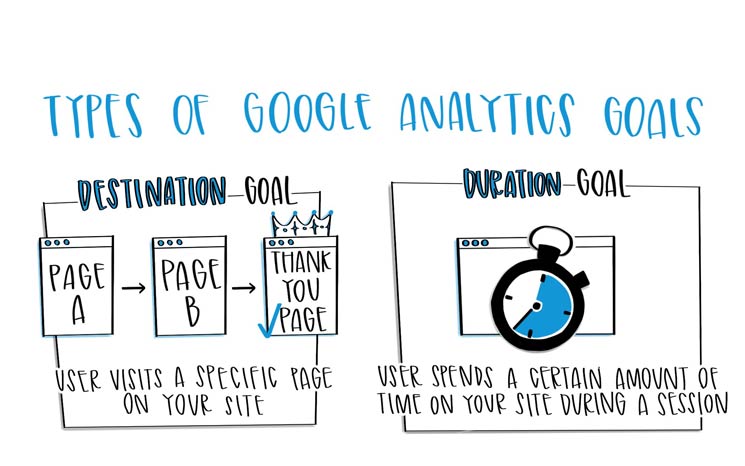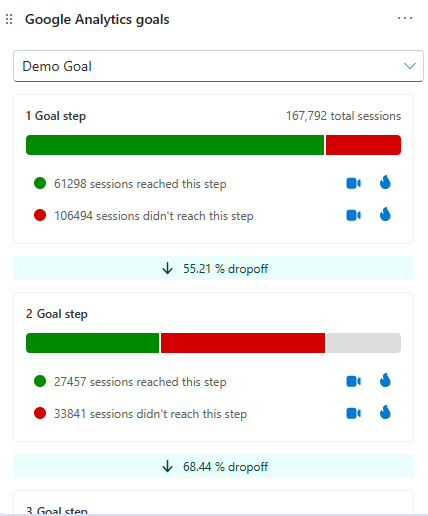Introducing the Blind Spots: Recognizing What Google Analytics Goals Can not Determine
In the realm of electronic analytics, Google Analytics stands as an effective device for monitoring and evaluating on the internet individual interactions. Amidst its durable capacities, there exist blind spots that typically avert dimension. what data is google analytics goals unable to track. Understanding what Google Analytics goals can not determine is essential for acquiring a detailed sight of customer actions and interaction. As we look into the complexities of these unseen areas, we discover an intricate internet of undiscovered areas that hold beneficial understandings right into individual activities and motivations, challenging standard wisdom and shedding light on the restrictions of our data-driven understanding.
Individual Habits on External Operatings Systems
Understanding just how users engage on exterior systems is crucial for maximizing online strategies. Outside platforms, such as social networks networks, reference web sites, and online forums, play a considerable duty in driving web traffic to a business's site. By evaluating user behavior on these systems, companies can gain valuable insights right into the performance of their marketing initiatives and the preferences of their target market.
One key aspect of individual behavior on exterior systems is the reference resource. By tracking where the individuals are originating from, businesses can determine which platforms are driving one of the most traffic to their site. This info can assist companies allot their sources a lot more effectively, concentrating on the systems that yield the very best outcomes.

Offline Conversions and Communications
Assessing individual habits on exterior systems gives useful insights right into on-line methods; nevertheless, thinking about offline conversions and communications is similarly vital for a detailed understanding of a business's general efficiency. While Google Analytics succeeds at tracking online communications, it falls short in catching the full client journey that commonly includes offline touchpoints. Offline conversions, such as in-store purchases or phone inquiries, play a considerable duty in lots of organizations' success. Disregarding these communications can lead to a distorted sight of the performance of marketing projects and total business performance.

Attribution Beyond Last Click
When delving right into the world of digital advertising and marketing analytics, it becomes important to look beyond the solitary touchpoint of the last click for an extra detailed understanding of acknowledgment. While Google Analytics offers valuable understandings right into user behavior, relying only on last-click attribution can be limiting - what data is google analytics goals unable to track. Attribution designs that go past the last click use an extra nuanced view of the consumer trip, taking right into account all the touchpoints that bring about a conversion
Attribution past the last click permits marketing experts to assign credit report to numerous communications along the conversion course, giving a clearer photo of the efficiency of different marketing networks. By exploring multi-touch attribution designs such as direct, time degeneration, or position-based acknowledgment, businesses can much better allot their marketing spending plans and enhance their strategies for maximum influence.
Comprehending the influence of each touchpoint in the conversion procedure is crucial for making notified choices and maximizing ROI. By accepting attribution beyond the last click, services can acquire deeper understandings right into client behavior and customize their advertising efforts more efficiently.
Cross-Device and Cross-Browser Monitoring

Similarly, cross-browser monitoring complements cross-device monitoring by capturing individual habits as they switch over between various web browsers. Comprehending how users connect with websites on various internet browsers can aid marketers maximize their on-line experiences to guarantee uniformity and functionality across different platforms.
Qualitative Data and Individual Intent
Recognizing user intent via qualitative information evaluation is essential for developing targeted digital advertising and marketing methods that reverberate with web the demands and choices of the target market. Qualitative data gives understandings right into the 'why' behind individual activities, clarifying inspirations, emotions, and preferences that quantitative information alone can not catch. By analyzing user feedback, remarks, and communications, marketing professionals can reveal valuable details regarding customer intent, permitting them to customize their messaging, web content, and offerings to much better line up with what their target market is seeking.
Qualitative information also aids in comprehending the context in which customers engage with a website or app. This contextual understanding allows marketing experts to create more individualized and relevant experiences, inevitably driving higher engagement and conversion prices. By delving into user intent through qualitative information click here for info evaluation, services can acquire a much deeper understanding of their target market, bring about much more efficient marketing techniques that satisfy individuals' demands and expectations.
Final Thought
Finally, Google Analytics goals have constraints in measuring individual habits on external systems, offline conversions, acknowledgment beyond last click, cross-browser and cross-device monitoring, and qualitative data connected to individual intent. what data is google analytics goals unable to track. It is very important for organizations to be aware of these dead spots in order to supplement their data analysis with various other tools and techniques to get a much more thorough understanding of their audience and boost their overall digital advertising techniques
By analyzing individual habits on these systems, companies can obtain important understandings into the performance of their advertising and marketing initiatives and the choices of their target audience.
Analyzing customer behavior on exterior platforms provides beneficial insights right into on-line methods; nevertheless, considering offline conversions and interactions is equally crucial for a thorough understanding of a firm's overall performance.In digital advertising and marketing analytics, moving beyond last-click attribution to explore cross-device and cross-browser tracking is necessary for getting an alternative understanding of customer interactions throughout numerous platforms and gadgets. By assessing user feedback, comments, and communications, marketers can discover valuable details about customer intent, allowing them to tailor their messaging, content, and offerings to much better straighten with what their target market is looking for.
By delving right into customer intent via qualitative data evaluation, companies can acquire a much deeper understanding of their target audience, leading to much more reliable advertising approaches that meet individuals' expectations and requirements.